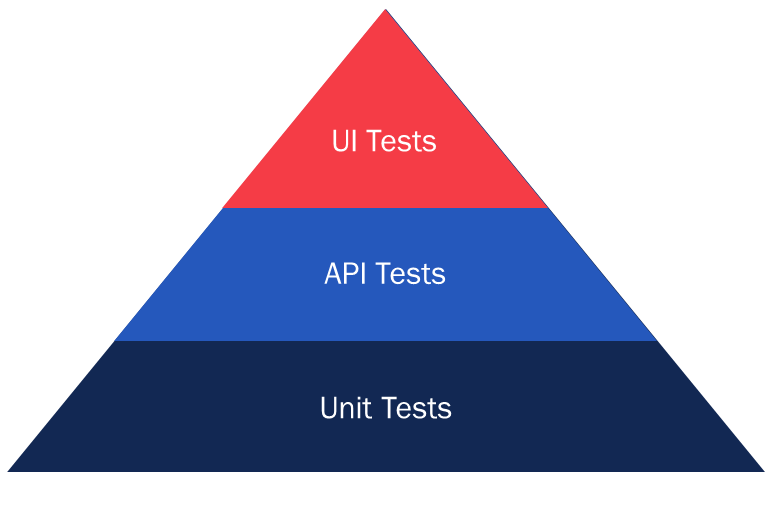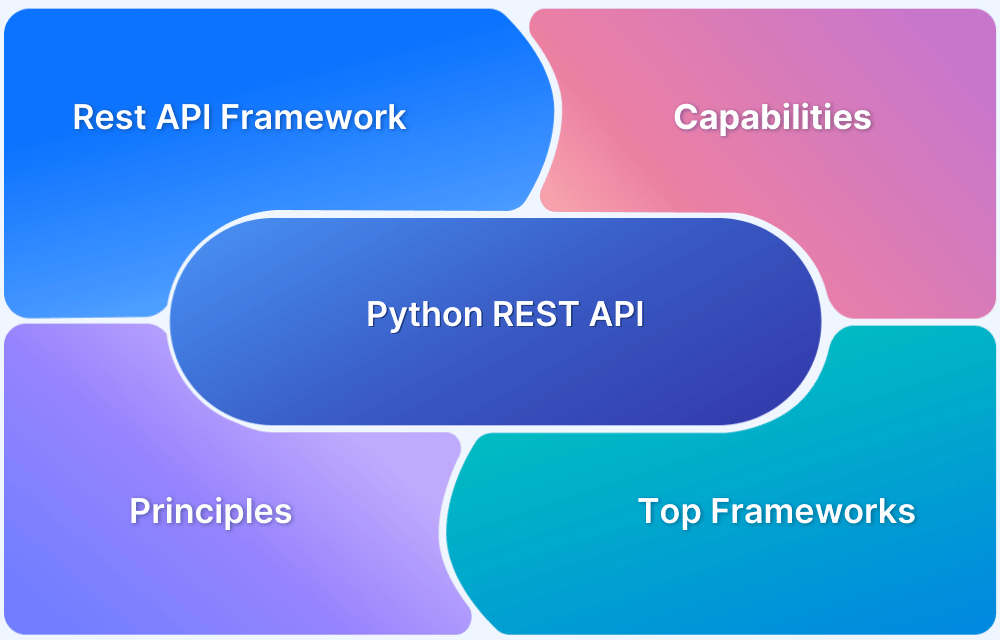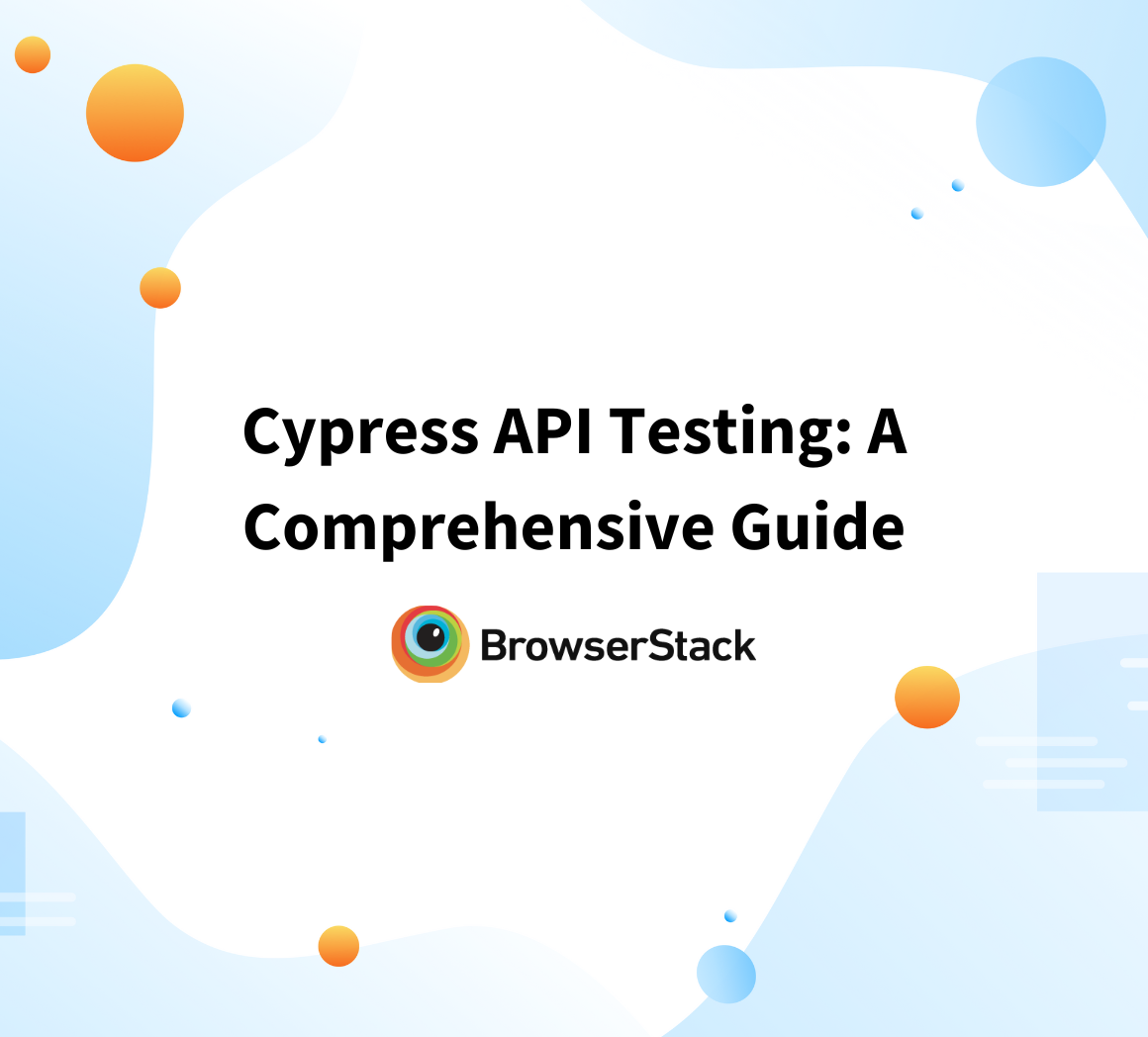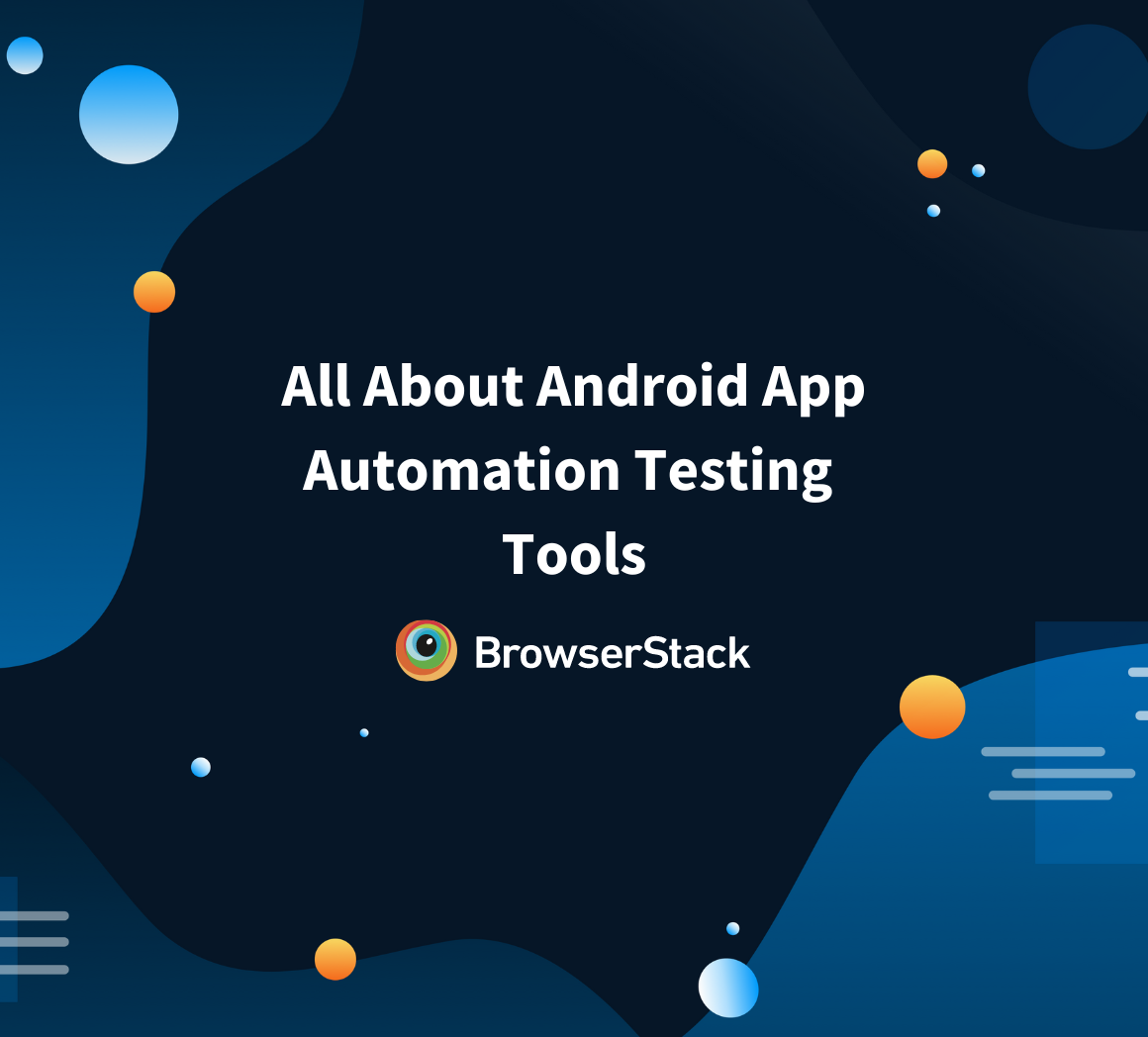What Is API Automation Testing?
By Hamid Akhtar, Community Contributor - December 19, 2024
API Automation testing refers to the process of automating the testing of APIs to validate their functionality and behavior. It includes sending requests to API, analyzing the responses, and comparing them against the expected results.
Automating API testing brings significant benefits, including the early detection of bugs, increased test case reusability, and elimination of human error. It also facilitates the development of API products faster and more efficiently, thereby saving time and resources in the long run.
This guide explores in detail about API automation testing, its types, and how to perform it.
- What is API Automation Testing?
- The Role and Importance of API Test Automation
- Shifting Left with API Automation Testing
- Understanding API Testing Pyramid
- Types of API Automation Testing
- Common Challenges in API Automation Testing
- How to perform API Test Automation?
- Test Cases for API Testing
- API Functionalities to be tested
- API testing Tools
- Benefits of API Test Automation
- Best Practices for API test automation
- Upcoming Trends in API Automation Testing
- Frequently Asked Questions
What is API Automation Testing?
API automation testing is the process of automating the testing of APIs to check if they are working as expected. An API testing tool that supports automation is used here to execute API tests at specific intervals or frequencies or in CI/CD pipelines to verify the functionality, behavior, reliability, and security of APIs. Requests are sent to the API; the responses are analyzed and then compared with a pre-defined outcome.
This process is particularly helpful for agile development teams as it facilitates fast-paced development cycles with continuous and methodical verification of the APIs’ working.
API automation testing is not intended to replace the manual practice but rather add to it. Teams that automate their API testing can prevent breaking changes from deployed to production.
Furthermore, it provides faster feedback, reduces manual effort, increases test coverage, and can be integrated into your CI/CD pipeline. Thus, it can lead to significant cost savings in the long run, by making the development process more efficient and cost-effective.
Example of API Automation Testing
Here’s a simple Python script using the requests library to send a GET request to an API:
import requests
response = requests.get(‘https://api.example.com/users’)
print(response.json())
This script sends a GET request to the /users endpoint of the API and prints the response data.
The Role and Importance of API Test Automation
API automation testing plays a crucial role in ensuring the robustness and reliability of software applications.
- API automation testing efficiently validates APIs, ensuring they function as expected and adhere to the required standards.
- API automation testing becomes even more critical in an API-first development approach, where applications are built by linking several different APIs.
- It improves the quality assurance process and ensures the timely release of high-quality software.
- API automation tests improve accuracy and can be run more frequently with better precision than the manual approach.
- API automation tests help with faster and early issue detection, helping developers fix them quickly. Thus reducing the costs and time associated with fixing them at a later, more complicated stage.
- API automation testing saves time and streamlines the efforts of QA by automating repetitive tasks, facilitating faster test execution without compromising on quality.
- Automated API tests are bound to reduce human errors.
Read More: What is a QA environment?
Shifting Left with API Automation Testing
Traditionally, QA teams perform software testing at the end of the development cycle. However, this approach is prone to human error and consumes a lot of time, which in turn leads to delays as unexpected issues have to be fixed.
Shifting left testing refers to performing tests earlier and iteratively during the development process instead of waiting until the very end. This helps avoid unexpected roadblocks in the process. API automation testing plays an important role in shifting left, as it enables developers to execute tests automatically within the CI/CD pipelines as and when they push new codes. This helps them to continuously analyze their work and detect issues before they reach the production environment. The automated approach helps teams to reduce costs and release features quickly.
Understanding API Testing Pyramid
Mike Cohn introduced the concept of the test automation pyramid in his book Agile. The image below represents the pyramid, which contradicts the way many non-agile development teams run automated testing.
Source: TTC Global
Here’s how it is broken down
- UI Tests (top layer) test an application’s user interface to verify its functionality. UI tests represent the top section of the pyramid and are a small section of the total number of automation tests to be created.
- The middle service layer represents the API tests that verify if the APIs work as expected without the complete involvement of the UI.
- The bottom and the largest layer comprise the unit tests. A unit testing verifies and validates a single unit of source code. Thus, developers can segregate and isolate their code’s smallest testable parts.
Types of API Automation Testing
This is the most basic type of API testing, which involves checking whether the API functions as expected.
For example, if you have an API endpoint that retrieves user information based on a user ID, a functional test would involve sending a request with a valid user ID and checking if the response correctly includes the expected user information.
def test_get_user_info():
response = api.get(‘/users/1’)
assert response.status_code == 200
assert response.json()[‘id’] == 1
2. Load Testing
This type of testing checks how the API handles many requests. For instance, you might send hundreds or thousands of requests to the API quickly and monitor its performance and response times.
from locust import HttpUser, task, between
class WebsiteUser(HttpUser):
wait_time = between(1, 2.5)
@task(3)
def load_test(self):
self.client.get(“/users”)
3. Security Testing
Security testing involves checking the API’s security mechanisms, such as authentication and authorization. For example, you can access protected endpoints without providing valid authentication credentials and verify that the API correctly denies access.
def test_protected_endpoint():
response = api.get(‘/protected’)
assert response.status_code == 401 # Unauthorized
This testing verifies that the API works correctly when integrated with other services. For instance, if our API relies on a database, you might check that it can retrieve and store data correctly.
5. Reliability Testing
This testing ensures that the API consistently performs under the proposed conditions. For example, you might run a series of functional tests in a loop for an extended period to check the API’s reliability.
This testing checks the API’s response time and speed. It is similar to load testing but focuses on how quickly the API can process requests and return responses.
7. Negative Testing
This testing involves providing invalid or unexpected input to the API to see how it handles such situations. For example, you might send a request with an invalid user ID and check that the API correctly returns an error.
def test_get_invalid_user():
response = api.get(‘/users/999999’)
assert response.status_code == 404 # Not Found
This testing checks whether the API works as expected across different platforms, devices, and environments. For example, you might run our tests on different operating systems or using different versions of the programming language to ensure compatibility.
Common Challenges in API Automation Testing
Here are the common challenges of API Automation Testing:
- Test Data Management: Managing test data is difficult. The numerous APIs with various parameters require enormous amounts of data to test them effectively. Maintaining such a large amount of data and ensuring that the data is reusable is a big challenge for API testers.
Read More: Top 15 Test Data Management Tools
- Access to Connected Systems: APIs pull data from multiple APIs and back-end systems, resulting in a complex architecture. It’s often impossible to have access to every environment on this tree. The emulation of inaccessible resources is key to avoiding testing bottlenecks.
- Test Monitoring: Visualizing automated tests is difficult as there are large numbers of tests running continuously, and therefore, interpreting raw data from test results can demand too much effort. Without clear test management tools, it can be challenging to analyze important insights like patterns of failure, trends over time, test coverage gaps, flaky tests, and more.
- Debugging: Debugging can be complex as failures can arise from various sources like code changes, environment inconsistencies, etc. In API automation testing, it is further challenging due to dependencies like external services, data setup requirements, and network conditions.
Read More: Top 15 Debugging Tools
How to perform API Test Automation?
Here’s how you can perform API Test Automation:
1. Select a Tool: Many tools are available for API testing that perfectly fits your objectives. These API testing tools help you to send requests to your API and validate the responses.
2. Understand the API: Go through the API documentation to understand its functionalities. This includes knowing the endpoints, request methods (GET, POST, PUT, DELETE, etc.), request parameters, and expected responses.
3. Create Test Cases: Based on the API documentation, create test cases that cover all possible scenarios. This includes positive testing (valid inputs), negative testing (invalid inputs), and edge case testing.
4. Execute Test Cases: Use the selected tool to execute the test cases. This involves sending requests to the API endpoints and validating the responses against the expected results.
5. Integrate with CI/CD Pipeline: Integrate your API tests with your CI/CD pipeline. This ensures that your tests are executed automatically whenever changes are made to the API.
6. Analyze Test Results: After executing the tests, analyze the results to identify any failures or issues. If any issues are found, report them to the development team for resolution.
Test Cases for API Testing
- Validate the API keys: API keys are often used for authentication. A test case should be created to validate that the API keys are within the expected range or length. This test case should also ensure that the keys are correctly responding to call requests, especially if JSON or XML APIs are being used.
- XML and JSON Schema Validation: XML and JSON are common formats for sending and receiving data via APIs. A test case should be created to validate the XML and JSON schema. This involves checking that the data is correctly structured and that the necessary fields are present. The parse response should also be verified to ensure that the server is correctly parsing out portions of the response data.
- Check JSON Schema Validation, Field Type, and Mandatory Fields: This involves checking that the JSON schema is correctly validated, that the field types are as expected, and that all mandatory fields are present in the response. This is important to ensure that the API is returning the correct data.
- Verify HTTP Response and Code Status: HTTP response codes are used to indicate the status of the request. A test case should be created to verify that the correct HTTP response code is returned for each API request. This can help identify issues such as server errors (500), not found errors (404), or unauthorized errors (401).
- Test Request Chaining: APIs often involve multiple requests that depend on each other. A test case should be created to test request chaining, which involves making multiple API calls in a sequence and verifying that they all work together as expected.
- Validate CRUD Operations: CRUD stands for Create, Read, Update, and Delete – the four basic operations of persistent storage. Test cases should be created to validate that all four operations work correctly for the API.
- Error Handling: APIs should be able to handle errors gracefully. A test case should be created to send invalid or blank input to the API and check how it responds. The API should return an appropriate error message and should not crash or stop functioning.
- Security Testing: Security is a crucial aspect of API testing. Test cases should be created to check the encryption of your API for vulnerabilities. This could involve trying to intercept the data using a packet analyzer, like Wireshark, to check whether sensitive data like API authentication tokens or API requests and responses can be viewed.
API Functionalities to be tested
- Endpoint Responses: Each API endpoint should return the expected response for a given request. This includes checking the status code, the data returned, and the response format. Bugs in this area could include incorrect input parameters, output format, response code, and data type.
- Error Handling: APIs should properly handle errors and return appropriate error messages. This includes testing with invalid inputs or when a resource is not available. Bugs in this area could include incorrect error messages or missing error codes.
- Security: APIs should be secure and protect against unauthorized access. This includes testing authentication mechanisms and checking for weak encryption, SQL injection, or insufficient authentication mechanisms. Bugs in this area could include unauthorized access to sensitive data or functions.
- Performance: APIs should respond quickly and handle a high volume of requests. This includes load testing to ensure the API can handle many concurrent users and requests. Bugs in this area could include slow response times or system crashes under high load.
- Functionality: APIs should fulfill all the requirements and functions they are designed for. This includes testing all the API endpoints and methods. Bugs in this area could include missing functionality or duplicate functionality.
- Compatibility: APIs should work well with the platforms, frameworks, or languages they are designed to interact with. This includes testing the API in different environments and configurations. Bugs in this area could include integration issues or incompatibility with certain platforms or languages.
- Reliability: APIs should be available at all times and provide consistent results. This includes testing for downtime and latency issues. Bugs in this area could include frequent downtime or inconsistent results.
- Documentation: The documentation for APIs should be clear, concise, and easy to understand. Bugs in this area could include incomplete or confusing documentation.
Read More: Top Python REST API Frameworks
API testing Tools
An API testing tool plays a significant role in validating API functionality, behavior, performance, and security. This tool automates requests, validates responses, and compares them against expected results. Thus, it is more reliable than manual testing and helps you execute tests at a faster rate. These tools also integrate into CI/CD pipelines, accelerating the process and maintaining API quality during development.
That being said, it is important to find the best API testing tool for your requirements. While choosing an API testing tool , make sure it aligns with your development and testing goals and comes with functionalities like seamless integrations, intuitive UI and parallel testing.
Here’s a guide that analyzes the top API testing tools to help you find the right fit for your needs.
Benefits of API Test Automation
Here are the top benefits of API test automation:
- Maximized Test Coverage: Automation testing with API tools allows for comprehensive testing of your API’s functionality, performance, and security. They can simulate various scenarios and conditions to ensure that the API behaves as expected under different circumstances, providing better coverage than manual testing alone.
- Faster Time to Market: By automating API testing, you can accelerate the development process. It allows for quick test execution and immediate feedback, helping in the earlier detection and resolution of issues in the development cycle. This acceleration leads to a faster time to market for new features and products.
- Improved Accuracy and Reliability: API automation testing helps ensure that your APIs function properly by automating the process. This reduces human error and increases the accuracy of your tests. Automated tests can run consistently and reliably across different environments, catching issues that manual testing misses.
- Better Collaboration and Reporting: Automation with API testing tools helps you collaborate better. They often come with features for easy collaboration among team members and detailed reporting capabilities. The features help track test results, document issues, and share insights, improving communication and coordination between developers, testers, and stakeholders.
Best Practices for API test automation
Here are the best practices to follow while running automated API tests:
- Do not automate complex tests: Automating complex tests can lead to overly sophisticated test scripts that may not deliver accurate and actionable results. Instead automate simpler, high-priority tests to streamline execution and troubleshooting.
- Test scripts should be independent and maintainable: To increase the accuracy and reliability of your API automation tests, it’s best to maintain your test scripts independently. They should be able to run without relying on each other to keep them functional every time.
- Run parallel tests: Parallel testing is highly recommended to distribute the load across multiple test environments and devices. This is particularly useful for large test suites for faster test execution.
Upcoming Trends in API Automation Testing
Here are the emerging trends in API automation testing:
Continuous Integration and Continuous Deployment (CI/CD)
Integrating API test automation with the CI/CD pipeline ensures that every code pushed into it undergoes proper testing and enables faster release of new features.
Artificial intelligence (AI) and Machine learning (ML)
The integration of artificial intelligence and machine learning is emerging in API automation testing. This can improve test coverage and scalability by further automating certain aspects of testing:
- Test case generation: AI can study user behavior, API flows, and code structure efficiently and generate test cases.
- Test execution and reporting: AI-powered frameworks can execute test cases, track responses, and compare them with pre-defined outcomes. They can also generate detailed reports stating the trends and anomalies.
- Test script maintenance: AI solutions can maintain and update test scripts as and when API code changes.
- Test environment management: AI can configure databases and automate deployment processes, thus, helping you manage test environments easily.
Conclusion
API testing plays a crucial role in the software development process. However, there are a few challenges and complexities associated with API testing tools.
- Configuration and Setup: Setting up an API testing environment can be challenging, especially when dealing with complex APIs or integrating with external systems.
- Technical Knowledge Requirement: API testing often requires a good understanding of APIs, HTTP protocols, data formats like JSON and XML, and programming languages.
- Reporting: Some API testing tools might lack comprehensive reporting capabilities, making it challenging to analyze test results effectively.
Browserstack Automate API enables users to retrieve information related to their Automate plan, project, build, and session details. These APIs follow the RESTful architectural style and utilize standard HTTP response codes for easy integration with other systems and tools.
Key features of BrowserStack’s Automate APIs:
- Access Test Information: With the REST API, users can access detailed information about their tests, including test plans, projects, builds, and specific session details.
- Command-Line Interface (CLI) Support: The API can be accessed through the command-line interface, allowing users to interact with the API directly from their terminal or command prompt.
- RESTful Architecture: The APIs are organised following REST principles, making them intuitive and easy to use. They use standard HTTP methods like GET, POST, PUT, and DELETE for performing various operations.
Overall, BrowserStack’s Automate APIs allow teams to access and manipulate test-related data programmatically, enabling greater flexibility, automation, and integration with other tools and systems.
Frequently Asked Questions
1. Which API is used in automation testing?
Various APIs like RESTful, SOAP, and GraphQL are used, with tools like Postman and SoapUI.
2. Is API automation testing easy?
It’s straightforward with the right knowledge and tools, but requires understanding of APIs.
3. Is API testing part of automation testing?
Yes, it’s crucial for testing functionality, reliability, performance, and security at service and integration levels.
4. Which language is used in API testing?
Languages like Java, Python, JavaScript, and C# are used, depending on project requirements and team expertise.
5. Is it always a good idea to automate API testing?
Automating API testing can be a good choice for repetitive tests and large test suites, as well as facilitating consistency.
However, it’s best not to choose this method when test cases change often, complex logic or human judgment is required, or in short and simple projects. It is always advised to go for a mix of manual and automated testing.
6. Who can do API automation testing?
API automation testing can be performed by testers, developers, or QA engineers who have a strong understanding of API and are familiar with Programming languages, API testing tools, automation frameworks, and version control systems.





